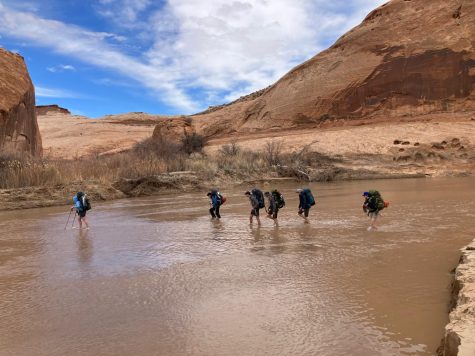Op-Ed: How to Become an Outdoor Program Leader in a Week with no Prior Backcountry Experience
May 13, 2017
Admittedly, the title is slightly misleading. It takes more than a week to become an Outdoor Program leader considering that a candidate will spend a significant amount of time completing the Wilderness First Response requirement, gaining van certification and probably even considering the possibility of becoming an OP leader without much backcountry experience. However, my experiences with the Outdoor Leadership class this spring has taught me some valuable lessons when it comes to the backcountry and leadership in general. The following steps and lessons could prove highly resourceful in achieving the skills to become a leader, and they can be achieved with a week’s backcountry experience:
- Do your homework: There are people who argue that outdoor skills are acquired over time and with due experience. While that may be true to a significant extent, there is much to be done in the realm of outdoor leadership before entering the backcountry. One should learn the skills of map reading, get familiarized with backcountry etiquette and principals, study the terrain, learn how to predict weather, etc. beforehand. Similarly, practicing knots, watching relevant YouTube videos can make more difference in one’s performance and outdoor knowledge than they would think.
- Go with the right mindset: Your mindset before and during an outdoor trip is more important than you would think. One must remain wary of a sort of culture shock they will experience; the backcountry brings with it an entirely new sense of non-familiarity. A candidate for future leadership should prepare for the discomforts of the backcountry and enter a state of expedition behavior. This would require them to constantly remain aware of their surroundings, potential risks and the inevitability of mistakes.
- Ask questions: Even the stupidest of questions can make a huge difference in one’s performance. How to tighten your backpack or which knot to use to hitch the tents may seem like obvious or unnecessary questions, but can make a lot difference in comfort and efficiency. This is when everything you learned in theory by doing your ‘homework’ can be put into practice.
- Plan for anything and everything: Spontaneity is not good in any backcountry situation. Always trying to stay one step ahead never hurts.
- Stay in the loop: Take initiative to be a part of the planning that takes place before the trip. Ask as many questions during the trip, always know where you are, provide input in terms of suggestions and learn from any and all mistakes made.
- Force yourself to do things: The backcountry is the worst place to be lazy. Make peace with waking up early, embracing the discomforts caused by weather conditions and push your physical and mental boundaries. Do not give yourself the chance to regret not doing enough.
- Have fun: Never forget why you enter the backcountry in the first place.









